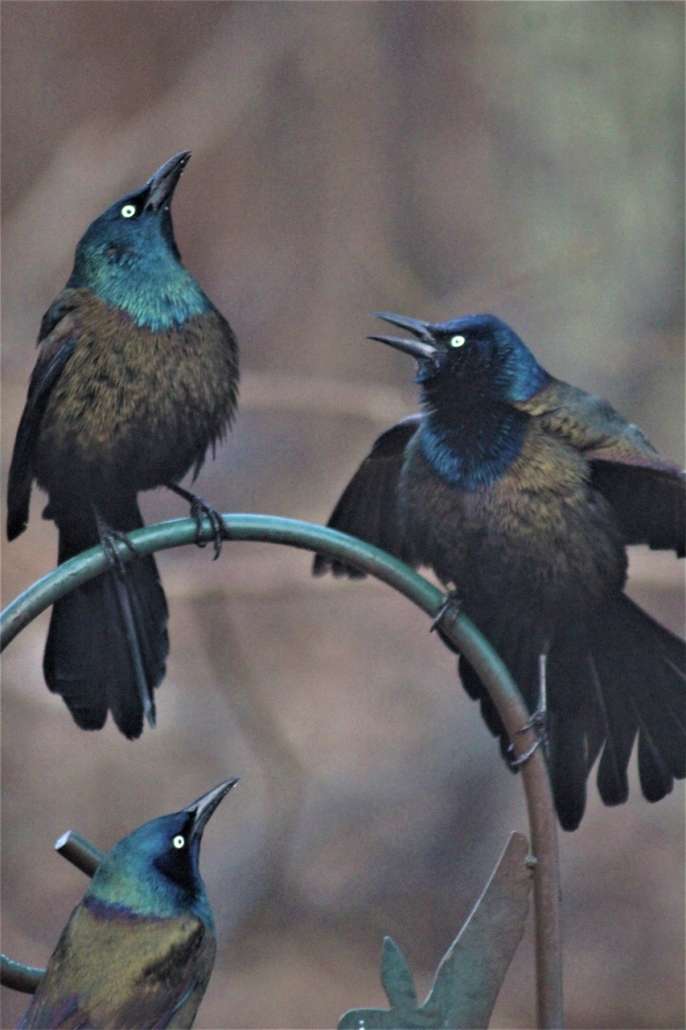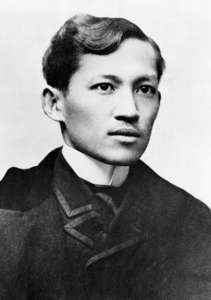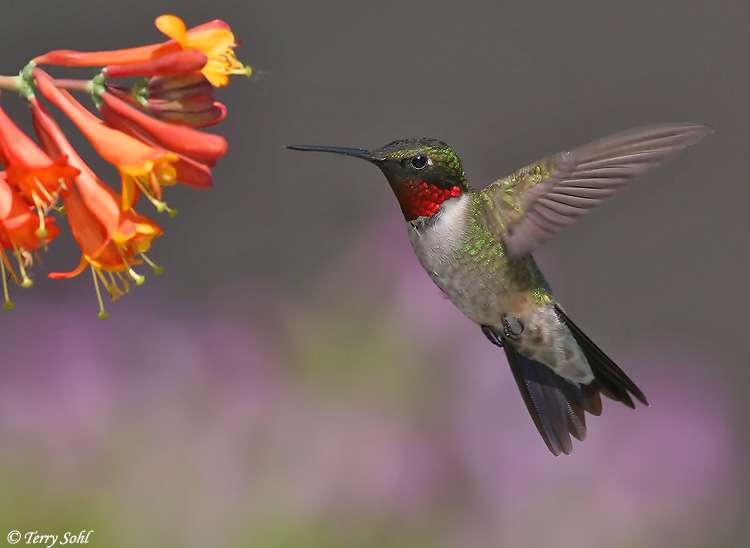FOR YOUR HEALTH – A Reason To Smile: Saving Money On Dental Care
/0 Comments/in For Your Health/by Website Editor Saving money, time and trouble on getting quality oral care with a dental savings plan can certainly be something to smile about.
Saving money, time and trouble on getting quality oral care with a dental savings plan can certainly be something to smile about.
(NAPSI)—According to the Centers for Disease Control and Prevention, you may be able to take a bite out of all sorts of health risks—if you take care of your oral health.
The Problem
Oral disease—particularly cavities, severe gum disease, tooth loss and oral cancer—can cause pain and infections that may lead to problems with eating, speaking and learning. It can also affect social interaction and even employment potential. Yet a quarter of adults aged 20 to 64 currently has cavities and, the University of Illinois College of Dentistry reports, about 74 million Americans have no dental insurance.
An Answer
Fortunately, having insurance or paying full price are not your only options. Dental savings plans are an affordable alternative to dental insurance that offer plan members 10-60% off most dental procedures (preventive and restorative) from a nationwide network of dentists.
How They Work
A dental savings plan functions a lot like a membership at a warehouse club. You pay an annual fee and choose among dozens of different plans offered by major healthcare companies. Family plans and individual plans are available. Then you go to any of 140,000 participating dentists, show your membership card and pay a reduced fee. While dental insurance has annual maximums, waiting periods, deductibles, forms to file, health restrictions and annual limits, dental savings plans do not. Dental savings plans are typically priced at about half of what dental insurance policies cost.
According to a blog post on DentalPlans.com, personal finance expert Suze Orman said: “Dental savings plans are not only far more affordable to purchase than dental insurance—they can also save you more money in the long run especially if you need extensive dental work or braces.”
Learn More
For facts on how dental savings plans can help you save money on dental care, call DentalPlans.com at 844-779-1021 or visit www.DentalPlans.com. Further information about dental health can be found at www.cdc.gov/oralhealth/fast-facts/index.html.
LIFE ON THE PLAINS: How we entertained ourselves pre-TV
/0 Comments/in Life on the Plains/by Roland D. Hallee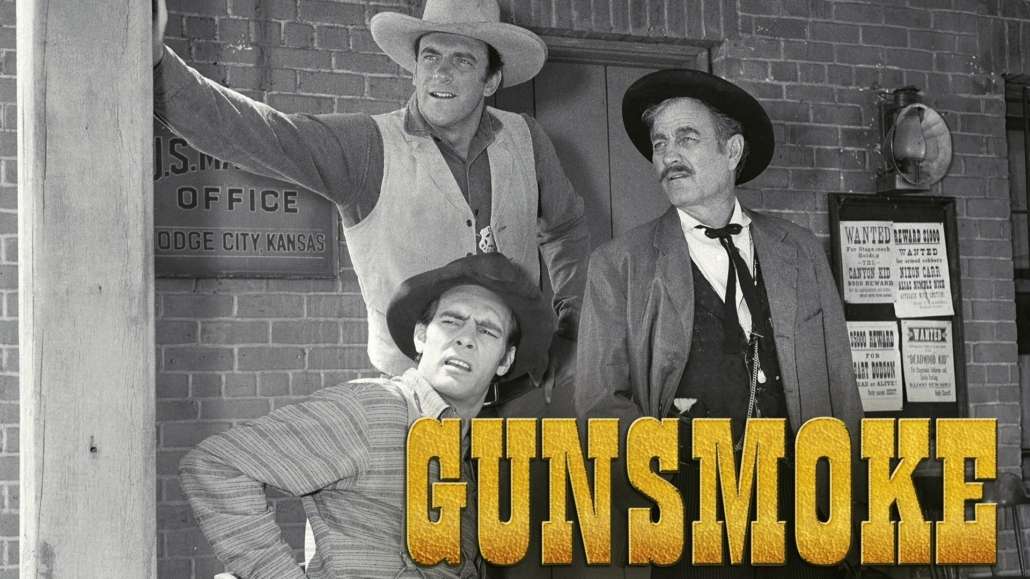
 by Roland D. Hallee
by Roland D. Hallee
I was 11-years old when we got our first TV in October 1958. It was a black and white floor console. At that time, you could only get three channels – 5, 6 & 8. More on that later.
This week, we’re going to take a look at what we did for entertainment pre-TV and electronic games.
This was especially true during the summer months when school was out. The neighborhood kids, and there were many of us, would gather to decide what we would do. Sometimes we would decide on playing Simon Says, the game where the person says the words “Simon Says” before instructing your next move. If you follow the directions, you get to move forward toward the “goal”. If you moved without the magic words, you had to move backwards. Kind of a silly game, but you’d be surprised how many would move forward without hearing the “Simon Says”.
There were other games, SPUD, Kick the Can, and, of course, good old hide-and-seek, which is now called “man hunt”. We had to get special permission to play that one because it had to be played after dark. We had curfews. Customary to those days, the parents would send you out to play, and tell you, “don’t come home until the street lights come on.”
Those were games played amongst the kids. There was also family night. It was usually Saturday night, after dinner. We lived in a duplex, with my grandparents living next door. When it was time, we would call out to our grandparents to come over. I failed to mention at the time we didn’t have a telephone, either.
The grandparents would come over, we’d sit around the kitchen table, and play Po-Ke-No, a game similar to Bingo, only played with a deck of cards, and a game card before you. We played with plastic chips, and the winner on the night had the most chips. Pretty simple that even an eight-year-old could play. I think I may have caught my grandfather cheating, but I could never prove it, nor did I try.
Sometimes, on Saturday night, we were allowed to stay up to listen to the radio. That was one of the ways our mother could get a handle on things. We were threatened, “If I have to speak to you today, you won’t be allowed to listen to the radio tonight.”
There were two shows we enjoyed: The Inner Sanctum, and Gunsmoke. The Inner Sanctum didn’t really interest me, it was the beginning and the end. The program’s familiar and famed audio trademark was the eerie creaking door which opened and closed the broadcasts. It was kind of a mystery show, and I didn’t understand some of the plots.
Of course, the other was Gunsmoke, with all the adventures of Marshal Matt Dillon. That was my favorite, and to this day, Gunsmoke reruns on cable television are my favorite episodes to watch. That is probably because my most watched TV programs are old westerns, even better in black and white.
In the winter, there was sledding down the “Jinjine Hill” (Don’t ask where the name came from). A street, with a steep hill at the end, that existed back then connected Lockwood Alley with Silver St., that came out across the street from the old Morning Sentinel building. It was super fast and sometimes treacherous to navigate. Again, the whole idea was to see who could coast the farthest at the bottom of the hill. There were many a collision with an iron fence that surrounded a house that stood at the bottom of the hill, a little to the left. If you didn’t make that adjustment at the bottom of the hill, you were probably headed home for some repairs.
Also, during the summer, many would gather at Lockwood Field, a state-of-the-art Little League field located off Oxford St. The spot is now a parking lot. Many a game was played there, and, of course, we all tried to be Mickey Mantle and hit home runs. The furniture store across the left field fence had an inviting showroom window facing home plate. Many tried, but no one succeeded.
One day, one of the kids in the neighborhood, who was extremely large for his age, said he could hit a home run over the “Round House”, located at the corner of Water and Kennebec streets. “P-2” as he was affectionally known (not Robert Michaud, who was the owner of Poulin’s Optician on Main St. in later years), launched a baseball that day that cleared the roof of the building and landed in a parking lot where the old KFC building now stands. I don’t recall if we ever found that ball. That was a feat that many tried to emulate, but could never accomplish.
Those were some of the ways we entertained ourselves pre-electronics.
REVIEW POTPOURRI – Film: A Kiss Before Dying
/0 Comments/in Review Potpourri/by Peter Cates by Peter Cates
by Peter Cates
A Kiss Before Dying
Recently I viewed a 1956 film noir, A Kiss Before Dying, starring Robert Wagner and Joanne Woodward, both still living at 92; Virginia Leith (1925-2019) and Jeffrey Hunter (1925-1969).
From the visual perspective, it was a very good United Artists technicolor experience. The wide shots of the college campus, the small city downtown and the magnificent desert cliffs of the four corners horseback riding trails of New Mexico, Colorado, Utah and Arizona were skillfully done.
The movie was based on a 1953 novel of the same name by Ira Levin (1929-2007) whose Rosemary’s Baby and Stepford Wives were also transformed into successful films.
The plot concerns a college student, Bud Corliss (Wagner), who is pursuing a gold-digging courtship of a wealthy heiress, Dorey (Woodward), and she becomes pregnant. She is also madly in love with Corliss and desires marriage even if her father were to disown her, but a lack of reciprocation leads Corliss to planning a murder.
He forges her signature and mails a suicide note to Dorey’s father. Then, under pretense of taking her to the City Hall marriage bureau on the 12th floor (knowing that that office is closed during lunch hour), he suggests that the two of them, while waiting for the office to re-open, walk up to the rooftop balcony to enjoy the view, upon which he pushes her off the roof.
For “lack of any real evidence” – admittedly a point which stretches credulity, the murder is ruled a suicide by the authorities.
A few months elapse during which Corliss worms his way into the affection of Dorey’s sister Ellen (Leith) without her at first knowing of his connection with Dorey, but the plot thickens and I will leave off here.
I have generally found Robert Wagner’s acting to be overrated and his portrayal of Corliss does little to change my mind. The gifted Joanne Woodward considered Dorey her worst role but I found it a convincing, sympathetic depiction.
Virginia Leith was also very good at conveying charisma in sister Ellen’s personality, while Jeffrey Hunter as a tutor at the college who was working with Dorey, Mary Astor (1906-1987) as Bud’s mother and George Macready (1899-1973) as Dorey and Ellen’s father all did very good work.
Hunter was superb as John Wayne’s co-star in the 1956 John Ford classic The Searchers and the 1960 Hell to Eternity in which he portrayed the World War II Marine soldier Guy Gabaldon (1926-2006) who talked over 1,300 Japanese soldiers and civilians into surrendering during key battles in two of the Pacific Islands.
Mary Astor’s most famous role may have been as the murderess in Humphrey Bogart’s 1941 The Maltese Falcon.
Macready frequently portrayed either polished villains or temperamental men of wealth.
Berlin-born Director Gerd Oswald (1919-1989 and, as far as I know, no relation to John F. Kennedy’s assassin) did generally good work, except for the bland Wagner, and was most renowned for episodes of such TV shows as Perry Mason, The Outer Limits, Bonanza, The Fugitive and Gentle Ben.
MY POINT OF VIEW: A lesson learned
/1 Comment/in My Point of View/by Gary Kennedy by Gary Kennedy
by Gary Kennedy
I am not only a Rotarian but also a Knight of Rizal. I believe the most beautiful love story is the life and loves of Doctor Jose Rizal. Jose Rizal was born in the very beautiful hamlet of Calamba Laguna, Philippines on June 19th 1861. He died at dawns early light on December 30, 1896, at the hands of a Spanish firing squad. He was only 35 years old.
Dr. Rizal was a brilliant young optometrist whose most memorable surgery was that of the one performed on his own mother. She was blinded by cataracts. The surgery was successful. He loved his entire family as well as friends, unconditionally and spent his very short life trying to increase their lot, especially their equality in all forms to other races. He was one of the greatest humanitarians that God ever allowed to draw breath. His philosophy was not self centered or based on greed but to have the world recognize that all men were created equal and should have the right of life, liberty and the pursuit of happiness. (Sound familiar?) This included the realization that we were all born in the likeness of God as well as with the ability to think and to develop those abilities into meaningful products or venues.
Dr. Rizal was a brilliant doctor but also the master of many languages and skills. The list of his abilities is far greater than that of anyone I have ever known. His format was for the world to see Filipinos as a race of people equal to the best of what the world had to offer. Time is proving him to be correct. He surrounded himself with other scholars who shared his belief not only for Dr. Rizal’s race but that of others. The USA has many clubs nationally.
Dr. Rizal was raised under Spanish rule and he loved and respected Spain. He devoted his life trying to show Spain of his loyalty and respect and only asked for acceptance, as a child would his parents. For most of his beautiful life he sought Spain’s acceptance and its acceptance of equality and family. However, there were those who were jealous of him and wanted to see his beliefs along with its followers destroyed. When I read about this brilliant God fearing man I can’t help but think of the beautiful song that was written for Vincent Van Gogh, Starry, Starry Night. If you listen to the words they would parallel Dr. Rizal’s life.
I have read what has been made available to me about this man who some believe to be saint like. I am no expert on that but I certainly can see why some would hold him in the highest of esteem. Since I joined this group of followers in 2003, a day doesn’t seem to go by that his presence doesn’t cross my mind. I have often found myself day dreaming from conjured up memories of events in his life that have stuck with me from that which I have read, from books, essays, poems and articles which lead me down many paths. Dr. Rizal is one of those characters of life that leaves you with a lasting impression and many memories of which the human mind puts in its playground.
During one of the Cuban conflicts the Americans defeated Spain and took possession of the Philippine Islands. Under American rule, and becoming a USA territory, there was good and bad but change did come and over time Filipinos would fight alongside of the Americans, and to this day the American military has a large number of Filipino soldiers. They serve with great skill and integrity. They are also the largest alien population in Maine.
The Philippines ended up with the respect they so sorely deserved and education became mandatory. Although the Philippines is not yet a rich country or at least the people for the most part aren’t, it is well on its way. Dr. Rizal from the top of Mt. Makiling can say, “now the world can see that my people are as intelligent and gifted as any of this world”. I think the histories of America and the Philippines are very similar, as an intelligent God fearing nation which is still in the growth stage. There are those of other countries that have the same desire for superiority and greed as Spain once did. There is good and bad everywhere.
Beware of the little dog as he can reach places that others cannot and that is a serious under estimate of situations. Dr. Rizal and the lessons he left us with will be remembered and honed into tools of success. As I write these words these things are happening. Love of God and family are very powerful tools of which to build for. If you don’t love God and respect the rights of others to exist you have no foundation. There is no purpose to your life besides self fulfillment coupled with greed. On December 30, Jose Rizal willingly gave his life in order to lay down an example.
It was the leaders of the church and another country that took this beautiful man’s life of which he allowed for all to see. There were many tears shed then and there are still more now. Foot prints such as those are very hard to fill and very few in history have. In the end Dr. Rizal didn’t ask for any earthly reward. He just wanted to set an example. His only request was to the Spanish, who were about to take his life as the sun was rising on beautiful Manila Bay, “please let me face the sun as it is rising”. However, the world of 1896 seemed to have little or no heart. His final request was refused. The friars of the time wanted him to be shot in the back.
Dr. Rizal, while in a prison cell, prepared for this answer and planned his last moment on this earth. He would place his feet, weight and body so as when the volley of lead balls were to strike his back his body weight would compensate allowing his hat and body to meet the earth face up. Also some say a dog circled his body howling. The dog was identical to a dog that Rizal loved. Some believe it was the spirit of a dear friend. I guess I will have to wait to find out. Dr. Rizal wrote several books, the most famous of these were Noli Me Tangere and El Filibusterismo. There are many essays, poems and various manuscripts. All that you can find is well worth the reading. Also a complete history of Dr. Rizal is available. In my opinion he was one the most remarkable men in the history of the world. I am a member of the Knights of Rizal and would love to see a branch started here in the pristine state of Maine.
We are in some very precarious times right now. History has left us with so much information and so many doorways in which to unlock. I chose to share this very short story of a very big man during this time as his work, beliefs and philosophy have love as its foundation. God bless and may your decisions be based on the heart. It is a tablet for the one we hold most dear and will face in its time. If you would like to know more about this great human being, let me know and I will write more. It’s world history and available.
SCORES & OUTDOORS: Where are the male ruby-throated hummers?
/0 Comments/in Scores & Outdoors/by Roland D. Hallee by Roland D. Hallee
by Roland D. Hallee
Back in May, my wife and I moved to camp for the summer. It’s always great to leave the city and live in the serenity by the lake for about five months.
And, on that Sunday, we were greeted by my wife’s favorite bird, the ruby-throated hummingbird. It was nice to see the little critters back with us.
As usual, the rule of thumb for their return from the south is around the middle of May.
But, since then, a phenomenon has occurred. Although we see a multitude of female hummers, as of last Friday, we had not seen a single male. Finally, on Saturday, one appeared, briefly mind you, and stayed about 2.5 seconds, then was gone. We have not seen another since. Kind of a mystery to us.
The ruby-throated hummingbird, Archilochus comumbris, the only hummingbird species found in Maine, winters between southern Mexico and northern Panama. During their migration south in the fall, usually mid-September, older male and female birds are better prepared for long-distance flight than first-year birds by having higher body weights and larger fuel loads.
Adults of the species are not social, other than courtship, which lasts a few minutes, they lead solitary lives. They do not migrate in flocks, so individual birds may spend the winter anywhere in this range where the habitat is to their liking. They probably go to the same place every winter.
While we’re talking about their migration, let’s put a myth to bed. The myth states that hummingbirds hitch a ride on the backs of geese as they migrate south. The legend is entertaining, but false. Hummingbirds and Canada geese migrate at different times and to different locations. It is also a fact that not all hummingbirds migrate south for the winter.
Following the mating, the male departs and the female provides all parental care.
When it’s time to return north to their breeding grounds during the spring migration, portions of the population fly from the Yucatan Peninsula, in Mexico, across the Gulf of Mexico, first arriving in Florida and Louisiana. That in itself is an amazing feat. How can such a small creature travel the 500 miles nonstop over water? It would seem the caloric energy would far exceed the hummingbird’s body weight of 0.11 ounces. Research has discovered the tiny birds can double their fat mass in preparation for their gulf crossing, then expend the entire calorie reserve from fat during the 20-hour crossing when food and water are unavailable.
During the courtship displays, they make ticking sounds with their wings, and shuttle side-to-side in flight. I once witnessed a male hummingbird during courtship by flying, rather rapidly, in a U-shaped pattern, beginning at the top of the inverted arch, flying downward, circling back up to the same height as it began, and back again, several times. It was pretty impressive to watch.
Hummingbirds have one of the highest metabolic rates of any animal. During flight, their oxygen consumption per gram of muscle tissue is approximately 10 times higher than that seen in elite human athletes.
They feed frequently during the day. When temperatures drop, especially on cold nights, they may conserve energy by entering hypothermic torpor (the process of lowering their body temperature to conserve energy).
During their hovering at feeders, the hummingbird’s wings beat up to 80 times per second. They are also the only bird that can fly backwards. Once, while my wife was sitting on the deck near a potted geranium plant, a hummingbird came to feed. It got so close she could actually feel the cold breeze coming off the bird’s fluttering wings.
Hummingbirds almost never stop. Although I have seen them sit on a perch at the feeders. They spend nearly all of their time in the air. Their legs are so small and weak, they typically can’t walk at all. But in the air, they are masters. They can, however, shuffle to move along a branch, and can scratch its head and neck with its feet.
Speaking of feeding, when is a good time to put out the feeders in the spring? In the northeastern United States, they should be ready by the end of March. Don’t wait until you see your first hummingbird, that may be well after the first ones arrive.
As unlikely as it seems, hummingbirds have predators. A variety of animals prey on hummingbirds given the opportunity. Due to their small size, they are vulnerable. However, only very swift predators can capture them, and a free-flying hummingbird is too nimble for most predators. Chief predators include sharp-shinned hawks, praying mantises, green frogs and bull frogs. Praying mantises especially have been seen to ambush adult hummingbirds at feeders on more than one occasion. Blue jays are common visitors at nests, as well as bats, squirrels and chipmunks.
The oldest known ruby-throated hummingbird to be banded was a little over nine years old. Almost all hummingbirds over seven years old are females, with males rarely surviving past five years of age. The reason probably being that males may lose weight during the breeding season due to the high energy demand of defending a territory. Also, the high demands of the migration can take its toll.
Maybe we’ll see more males, and their brilliant throats, before the summer is over.
Roland’s trivia question of the week:
“Game, set, match,” is an expression used to indicate a competitor has won the game in which sport?
FOR YOUR HEALTH: Body Neutrality: It’s More Than A Feeling
/0 Comments/in For Your Health/by Website Editor
JRNY offers trainer-led coaching for Bowflex cardio and strength products as well as whole body workouts including yoga, Pilates, stretching, core and more—removing the guesswork from experiencing a quality workout. All workouts are stored in your fitness journal so you can see everything you accomplished whether at home on your cardio equipment, or on the road with the JRNY app.
(NAPSI)—For years, people have been told by brands and influencers to be “body positive” and embrace the way their bodies look—no matter the shape or size. Sounds good, right?
Well, the term body positivity focuses on outward appearance and doesn’t account for overall health. For example, someone may be focused on feeling body positive and implement a gym routine that simultaneously neglects other important aspects of their wellness, such as nutrition.
Body neutrality, which has been championed by singer Lizzo and actor Jameela Jamil, has many definitions. Tom Holland, exercise physiologist and Bowflex fitness advisor, explains that the core concept is to take pressure off your appearance and to focus on how your body feels. He adds that when you realize the way you look is not necessarily indicative of your health or happiness, you can prioritize your holistic wellness instead of your appearance.
Although June is “Beautiful in Your Skin” month, any time is a good time to start being body neutral.
How To Establish a Body Neutral Workout Routine
•Feel good in your genes—Everyone has a different body type, genetic makeup, lifestyle and goals—meaning there is no one-size-fits-all health and fitness routine. Instead of following a generalized routine, you need to create custom workout experiences that fit your individual needs.
Fortunately, the JRNY digital fitness platform (https://www.bowflex.com/jrny.html) offers personalized, trainer-led workouts on Bowflex cardio equipment based on your fitness abilities and mood—removing any guesswork from achieving a quality, meaningful workout at home or on the go. Check out JRNY for full-body workouts, including yoga, Pilates, core, stretching and more.
•Pay attention to the numbers that matter—While the number on the scale can be an easy fixation point, it should not be the goal. Instead, focus on implementing workout goals that are achievable and controllable.
Holland says, “A key concept in creating a body neutral workout routine is to control what you can, such as making healthy eating choices, moving more, and adopting a positive mindset. When you make these small adjustments over time, good things will happen.”
For example, encourage yourself to better your mile time or increase your reps. At-home fitness equipment such as the Bowflex SelectTech 552 dumbbells (https://www.bowflex.com/selecttech/552/100131.html) make this process simple by giving you the ability to adjust the weight from 5 to 52.5 lbs. with the click of a dial, replacing 15 weight sets. Similarly, the Bowflex Max Total 16 (https://www.bowflex.com/max-trainer/mt16/100915.html) is ideal for those who want high-intensity interval training, and JRNY gives you access to your fitness journal so you can see your personal bests and improvements over time.al bests and improvements over time. Equipment such as this helps you to focus on the numbers that matter rather than the ones that don’t.
• Consistency is always key—The age-old saying still rings true: The more consistent you are with working out, the better the outcome. Aiming to work out a certain number of times a week is an achievable goal that is in your control.
“There are numerous benefits from each exercise session—whether that’s 5 or 60 minutes—including both physical and psychological impacts that you may or may not see in the mirror, such as a significantly decreased risk of many diseases, numerous cognitive benefits, increased energy, improved sleep and more,” Holland explains.
So, there’s no need to pick sides: Stay body neutral and embrace your fitness journey. You’ll feel successful knowing that you met or exceeded your goals.
LIFE ON THE PLAINS: School days in the ‘50s and ‘60s
/0 Comments/in Life on the Plains, Local History, Waterville/by Roland D. Hallee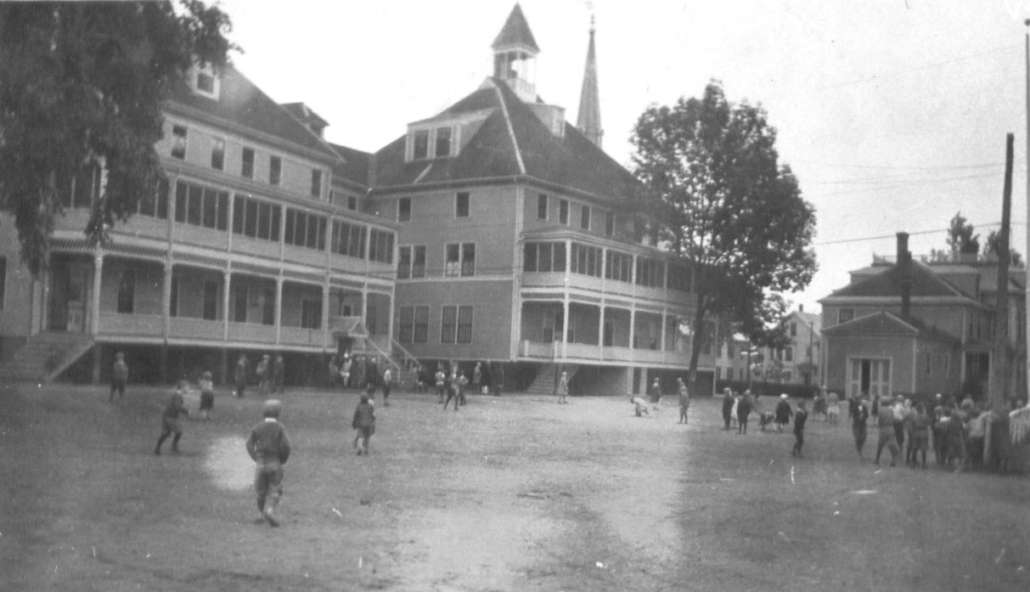
St. Francis de Sales elementary school, left, and the nun’s convent on right. There were some classrooms in the convent. (photo courtesy of Hallee family album)
 by Roland D. Hallee
by Roland D. Hallee
Let’s now proceed with what life was like on The Plains in the 1950s and ‘60s.
The Lockwood-Dutchess Textile Mill (the cotton mill as it was known), which was housed in three large, brick buildings at the foot of Main St., was in full operation. Many of the people in the area worked at the mill, and walked to work every day. Also, Hollingsworth & Whitney Paper Mill (H&W as it was known), was also in its hey-day, and many fathers worked there. They would walk to work, crossing the Two-Cent Bridge on foot, because not many had cars. My father and grandfather were two of the few in the neighborhood with wheels. My grandfather owned a pink and charcoal Packard Hornet, and my dad a blue and white, two-tone Buick.
Many of the mothers were stay-at-home moms that saw the children off to school every day. Nearly all of the kids in my neighborhood attended St. Francis de Sales parochial school, which was located on the corner of Elm and Winter streets. Every parish had a parochial and public school. There were three parishes in Waterville, Notre Dame, St. Francis and Sacred Heart. In the south end there was Notre Dame School, on Water St., and the public South Grammar School, on Gold St., in addition to St. Francis.
Back then, there were no buses unless you lived more than a mile from school. So most of us would gather in the morning and walk together. The same was true after school, which let out at 3 p.m. (Can you imagine that?)
The school was taught by nuns of the Ursuline order, and they were rather strict, especially on the boys. I have my theory as to why, but I will keep that to myself.
The girls would go to the school through the eighth grade, while the boys were sent to another school after the fifth grade. That would be St. Joseph’s School, where Notre Dame Church is now, as has been mentioned in past articles.
Of course, back then, I guess only in parochial schools, it was not called kindergarten, but the “baby grade”. You had to be five years old by October 15 to begin to attend. I turned five years old on October 22, so I had to wait a whole year to begin school. My parents pleaded with the nuns, saying I was ready for school, but they would have no part of “violating” the rule. It was set in stone.
Being almost six years old when I started school, I was a little older, and somewhat further ahead than the others. I just didn’t know it.

The “Brothers” School, near St. Francis elementary, where boys would go from sixth to eighth grades, until it was razed in late ‘50s. (photo courtesy of Hallee family album)
Actually, before the boys were confined to only the fifth grade, and shipped off to St. Joseph’s, there was another school across the parking lot from the parochial school, that was taught by the “brothers”. However, by the time I reached sixth grade, that school was shuttered, and eventually torn down. I don’t recall the name of the school, I guess because I was too young.
Since we all walked to and from school, some of the older boys – fifth graders – were assigned to be “patrol boys”. That is we wore white sashes, with a badge attached, designating us as crossing guards. We could not stop traffic, but we would escort the students across the street from the school. I was assigned the blue badge, meanning the captain of the corps. It didn’t really mean much.
Getting back to the neighborhood, we were a close knit group, and I can’t really tell you how many of us there were. We were a lot. Most families consisted of three to four, or more children, all blue collar families, where discipline was in order. Not that some of us didn’t get into some kind of trouble now and then. Nothing serious, mind you.
Next time, we’ll take a look at what we did back then for entertainment, minus television, and electronic devices. We made our own fun.
REVIEW POTPOURRI: Andrew Jackson
/0 Comments/in Review Potpourri/by Peter Cates by Peter Cates
by Peter Cates
Andrew Jackson
The seventh former President Andrew Jackson (1767-1845) has drawn much controversy during the more than 180 years since his years at 1600 Pennsylvania Avenue from 1829 to 1837. His stand against the abolition of slavery, his being a wealthy plantation owner with slaves at his large Tennessee mansion known as the Hermitage, his signing into law the forced removal of native Americans from their ancestral lands in Georgia and Alabama to the Oklahoma Indian Territory (resulting in so many deaths from disease and malnutrition on the Trail of Tears) and his abrasive uncouth personality alienated many of the more socially refined ladies and gentlemen during his lifetime.
However, his list of accomplishments include a few milestones. As general of the American forces stationed in the Gulf Coast during the War of 1812, he drove the British out of that area during the 1814 Battle of New Orleans, itself becoming the title of a 1958 Columbia Records megahit 45 by the late Johnny Horton (1922-1960) which many kids in East Vassalboro, including myself, owned and played constantly, much to the annoyance of our parents.
As President, Jackson fought and won against the establishment of a National Bank which he rightfully saw as benefiting only the wealthy. He was also the only president to pay off the national debt during his administration. Needless to say, he resonated with the common folks.
When he first arrived at the White House, he threw open the doors to large crowds outside and got more than he bargained for. The inside partygoers busted every window in the White House, Jackson himself narrowly escaping through a kitchen window.
Only when the servants brought food and kegs of beer outside to the Rose Garden did the melee subside.
Interestingly by some weird twist of fate, Jackson’s vice-president was also South Carolina Senator John C. Calhoun who stayed on in the job after former sixth President John Quincy Adams was defeated in his own re-election bid, but Jackson and Calhoun would have a falling out and Jackson would appoint Secretary of State and future eighth President Martin Van Buren as Veep for the second term.
Andrew Jackson’s wife Rachel (1767-1828) died one month before Jackson moved into the White House. She had been married previously for several years to an abusive man and, trying to escape from that relationship, had moved back to her mother’s home. That husband filed for divorce, after which she and Jackson got married in 1791, only to find out that Hubby One had been mistaken when he told Rachel the divorce had been granted without confirmation from the court.
When the divorce finally came through, the Jacksons had a second ceremony in 1794.
When Jackson ran for president, his political enemies viciously slandered the couple as big amiss and the distress caused Rachel much suffering and depression and may have led to her death at the age of 61.
As did her predecessor, Elizabeth Monroe, Rachel disliked political life but was supportive of her husband when he was a Senator from Tennessee, much preferring life at the Hermitage. She once commented that she would much prefer to be a doorkeeper in the heavenly house of the Lord to living in the White House palace.
A niece Emily Donelson (1807-1836) served as hostess for most of her Uncle Andy’s years in the White House until her early death from tuberculosis.
On June 8, 1845, Andrew Jackson died from heart failure at the Hermitage. He was 78.
A closing detail — Jackson fought for the removal of the Electoral College.
SCORES & OUTDOORS: It wasn’t a Graphic Flutterer, it was a Halloween Pennant
/1 Comment/in Scores & Outdoors/by Roland D. Hallee by Roland D. Hallee
by Roland D. Hallee
From time to time, it happens. You see something unusual, don’t know what it is, so you go to your research material to find the answer. You use multiple sources, do your homework, then, when you think you have found the answer, it ends up being wrong.
Well, it happened again last weekend for me. While working in my garden at camp, I noticed this unusual looking dragonfly. It wasn’t your run-of-the-mill, old brown ugly dragonfly. It was extremely colorful and just seemed out of place.
My research pointed to it being a Graphic Flutterer, rhyothemis graphiptera, The photo looked remarkably similar to the photo I had taken, but there was one thing that didn’t add up. The Graphic Flutterer can only be found in Australia, the Moluccas, New Guinea and New Caledonia. That’s half way around the world from here.
So, like I have done many times before, I turned to my contact, a wildlife biologist at the Maine Department of Inland Fisheries and Wildlife, emailed the photo to him, and he responded in short order.
“This is a Halloween Pennant,” (no, not a little flag you would wave on October 31), “Celithemis eponina. This is a native dragonfly in Maine, an uncommon, but not rare, species that breeds in slow streams, ponds, and lakes with abundant aquatic vegetation.”
Well, it sure fits. If you have been to Webber Pond, in Vassalboro, in recent years you will see that the lake is abundant with aquatic vegetation.
The Halloween pennant can be found across the eastern United States, ranging from the east coast to the states just east of the Rocky Mountains. They can also be found on some Caribbean islands and in Ontario province, in Canada. Seen mostly during June and July during the summer, they are actually active year round.
The Halloween pennant gets its name from its orange-colored wings, which have dark brown bands. They are often found on tips of vegetation near the edges of waterways. Mine was just hanging around on a Tiki torch near my garden.
It is a medium-sized dragonfly but also considered large for its species. They can range from 1-1/2 to 1-3/4 inches in length.
The adults fly around above freshwater habitat and the surrounding vegetation, and feed on smaller insects they capture in flight. They are considered very strong flyers, and can fly during rain and strong winds.
And, listen to this, they have some positive impact: They help control the mosquito population and have no negative effect on humans. I can only hope I see more of them, considering the healthy mosquito population we have at camp.
They are also secure in numbers and currently have no conservation concerns, according to the International Union for Conservation of Nature.
In case you’re interested, dragonflies have been in existence since the Permian period (299 – 251 million years ago).
In the end, I was not too far off when I identified it as a Graphic Flutterer. According to the Animal Diversity Web, at the University of Michigan Museum of Zoology, the male Halloween Pennant closely resembles the Graphic Flutterer.
Roland’s trivia question of the week:
Who holds the Boston Celtics’ all-time scoring record with 26,395 points?




